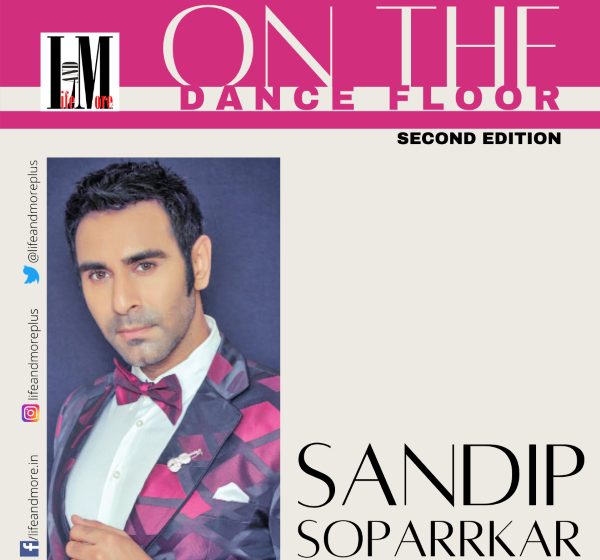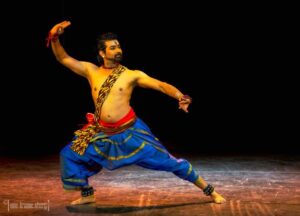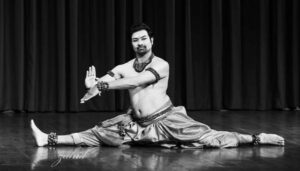Mayurbhanj Chhau dancer Rakesh Sai Babu is a talent extraordinaire

Dancing is a crafted skill that comes through much dedication, discipline, motivation, determination and above all laser sharp focus. That is why it is said a good dancer can command respect wherever they walk in, also if a dancer has royal ancestry in the art it becomes a cherry on the already iced cake. This cherry for surely belongs to the young and dynamic Rakesh Sai Babu.
Rakesh is a Mayurbhanj Chhau dancer and the recipient of the prestigious Bismillah Khan Yuva Puraskar in the field of Chhau given by the Sangeet Natak Academy. He is grandson of late Ananta Charan Sai Babu (1915-1989) who was instrumental in popularising Mayurbhanj Chhau in pre- and post-Independence India.
Born in a family of Chhau performers in Mayurbhanj, Ananta ji studied under his father Radhamohan Sai and others gurus of Chhau dance like Dibakar Bhanj Deo and Mohammad Rejak Khan. His successors, son Guru Janmejoy Sai Babu and two grandsons Rajesh Sai Babu and Rakesh Sai Babu continue to spread classical Chhau technique till today.
Rakesh has performed extensively in various dance festivals and shows all over India and abroad as well and conducted workshops in Chhau all over the world. Apart from being an empaneled with ICCR, he also teaches Chhau at his own dance institute and is founder director of Trikaya dance group, which he runs with his wife Priya Srinivasan who is also an accomplished Bharatnatyam dancer trained at Kalakshetra, Chennai.
Recently Rakesh performed a very fascinating and interesting show with episodes from the Indian mythology, where he danced with full gusto leaving the audience asking for more. The theme and stories he chose were beautifully performed and executed.
Celestial bird Garuda – Garuda visits Chandralok (the land of the moon) to bring amrit (nectar) in order to make his mother free from bondage. There, he has a fierce fight with Lord Vishnu. In spite of Lord Vishnu’s deadly weapons the Shankha, Chakra, Gada and Padma. No one is able to defeat the mighty powerful Garuda, and pleased with Garuda’s bravery Lord Vishnu offers him the amrit and requests him to be his vahana (vehicle). Garuda accepts this honorable position humbly with great joy.
Nataraj dance – An important and popular solo item where three aspects of Lord Shiva with three dominant moods that is creation, preservation and destruction were depicted in the dance. Rakesh used different yogic postures and integrated it attractively in the dance movement.
Dandi – This traditional Chhau item was based on the traditional custom of a Brahman boy, who becomes a brahmachari (bachelor) after all rituals (Bratopanayan), holding danda and kamandalu.
War dance (Rook Mar Nacha) – This is one of the group items in Mayurbhanj Chhau repertoire, which was conceived in early years of the evolution of Mayurbhanj Chhau. Rook means to defend and maar means to attack. This is highly stylised mock fight between two groups of warriors holding sword in his right and shield in left.
Sandip Soparrkar holds a doctorate in world mythology folklore, is a World Book Records holder, a well-known Ballroom dancer and a Bollywood choreographer who has been honored with three National Excellence awards, one National Achievement Award by the Government of India. He is also the recipient of the prestigious Dada Saheb Phalke award and Rabindra Nath Tagore Prize for social achievement. He can be contacted on sandipsoparrkar06@gmail.com




